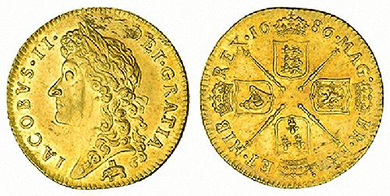| << Chapter < Page | Chapter >> Page > |
Slavery formed a cornerstone of the British Empire in the eighteenth century. Every colony had slaves, from the southern rice plantations in Charles Town, South Carolina, to the northern wharves of Boston. Slavery was more than a labor system; it also influenced every aspect of colonial thought and culture. The uneven relationship it engendered gave white colonists an exaggerated sense of their own status. English liberty gained greater meaning and coherence for whites when they contrasted their status to that of the unfree class of black slaves in British America. African slavery provided whites in the colonies with a shared racial bond and identity.
The transport of slaves to the American colonies accelerated in the second half of the seventeenth century. In 1660, Charles II created the Royal African Company ( [link] ) to trade in slaves and African goods. His brother, James II, led the company before ascending the throne. Under both these kings, the Royal African Company enjoyed a monopoly to transport slaves to the English colonies. Between 1672 and 1713, the company bought 125,000 captives on the African coast, losing 20 percent of them to death on the Middle Passage, the journey from the African coast to the Americas.

The Royal African Company’s monopoly ended in 1689 as a result of the Glorious Revolution. After that date, many more English merchants engaged in the slave trade, greatly increasing the number of slaves being transported. Africans who survived the brutal Middle Passage usually arrived in the West Indies, often in Barbados. From there, they were transported to the mainland English colonies on company ships. While merchants in London, Bristol, and Liverpool lined their pockets, Africans trafficked by the company endured a nightmare of misery, privation, and dislocation.
Slaves strove to adapt to their new lives by forming new communities among themselves, often adhering to traditional African customs and healing techniques. Indeed, the development of families and communities formed the most important response to the trauma of being enslaved. Other slaves dealt with the trauma of their situation by actively resisting their condition, whether by defying their masters or running away. Runaway slaves formed what were called “maroon” communities, groups that successfully resisted recapture and formed their own autonomous groups. The most prominent of these communities lived in the interior of Jamaica, controlling the area and keeping the British away.

Notification Switch
Would you like to follow the 'U.s. history' conversation and receive update notifications?